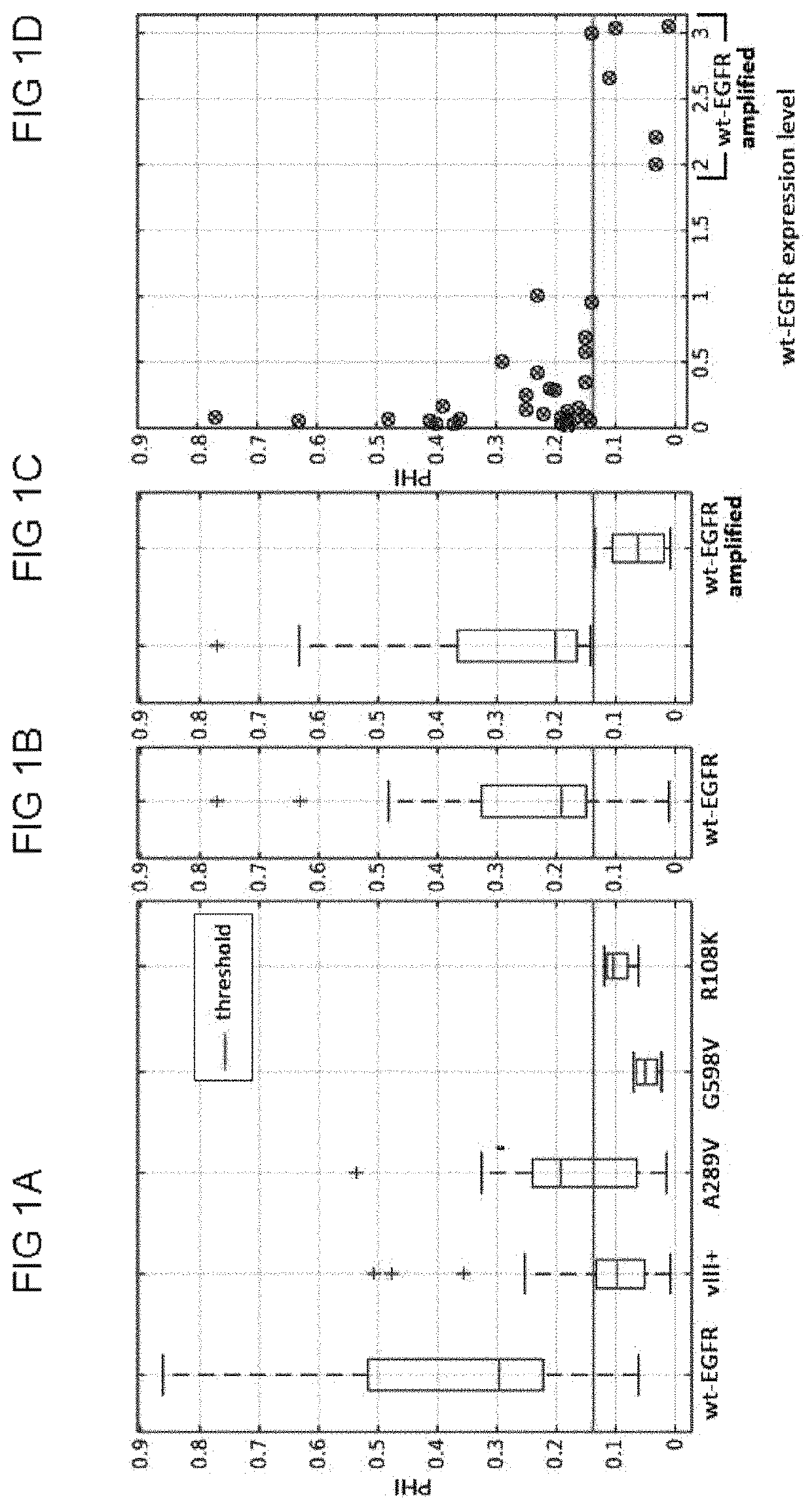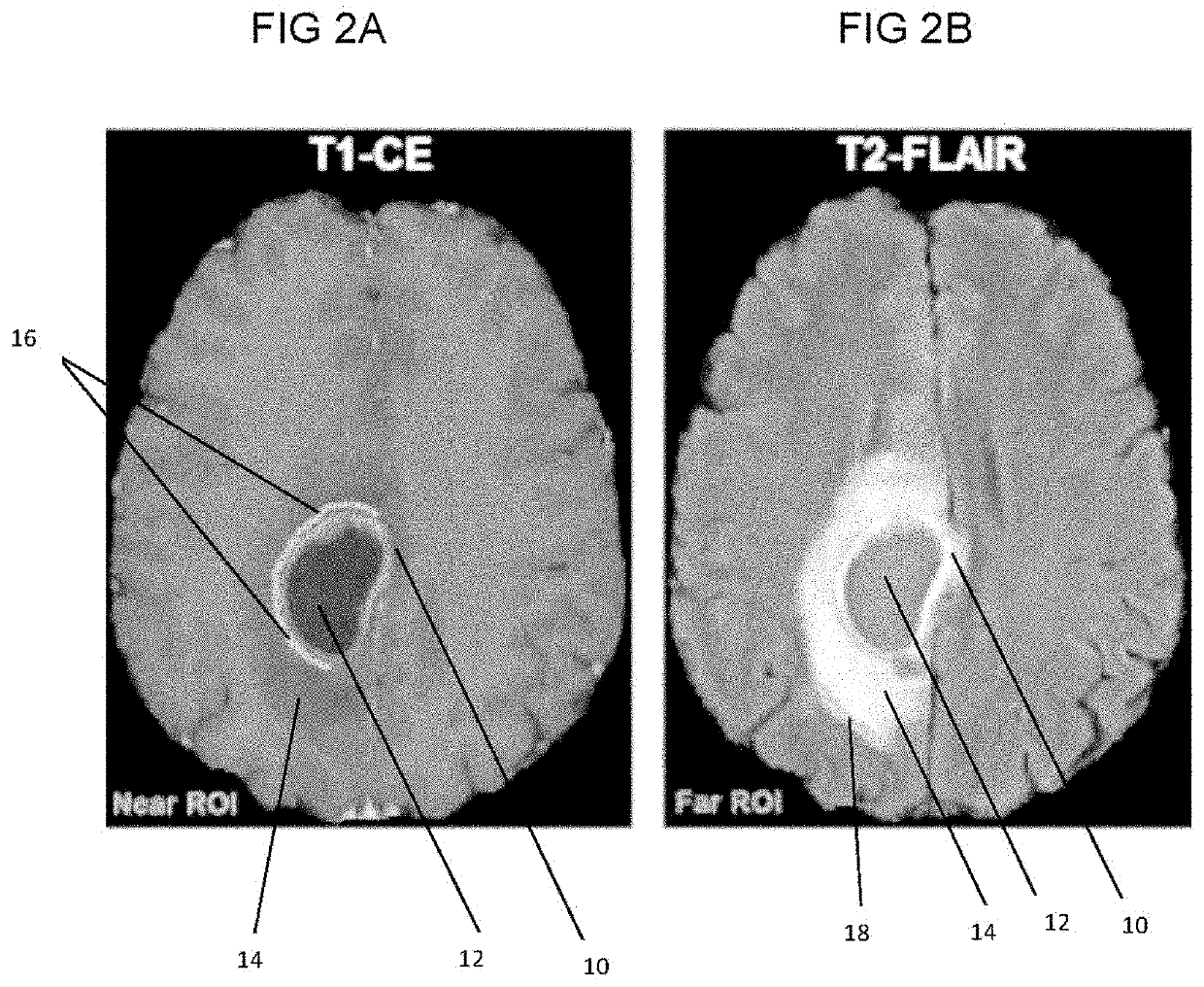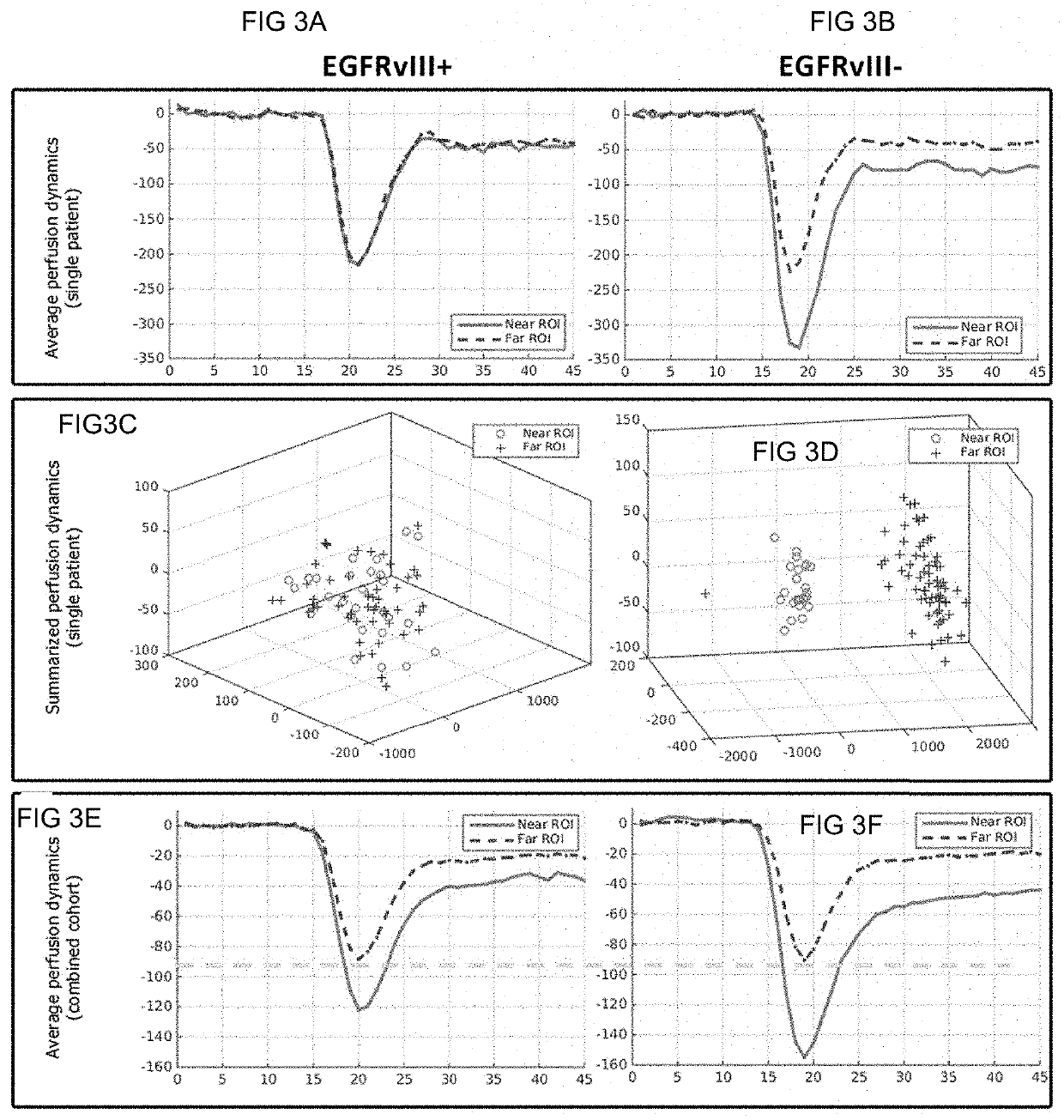In vivo detection of EGFR mutation in glioblastoma via MRI signature consistent with deep peritumoral infiltration
a technology of glioblastoma and egfr, which is applied in the field of in vivo detection of egfr mutation in glioblastoma via mri signature consistent with deep peritumoral infiltration, can solve the problems of difficult to determine the heterogeneous molecular characteristics of patients, the overall survival rate of gbm patients has not been substantial, and the tumor size is reduced. , the effect of reducing the presence and ,
- Summary
- Abstract
- Description
- Claims
- Application Information
AI Technical Summary
Benefits of technology
Problems solved by technology
Method used
Image
Examples
embodiments
[0053]Embodiments disclosed herein use EGFR mutants as a target for cancer therapy. For instance, EGFR events can be identified to drive one particular molecular subtype of GBM, namely classical GBM, and corresponding “abnormalities” in the EGFR expression may be associated with predicting survival rate and with directing response and treatment toward aggressive therapies.
[0054]Conventionally, EGFR mutant status is determined based on invasive tissue-based approaches, which include immunohistochemistry and next generation sequencing. These processes are hindered by numerous intrinsic and extrinsic factors. First, the expression of molecular characteristics in GBMs is spatially heterogeneous [A. Sottoriva, et al. Intratumor heterogeneity in human glioblastoma reflects cancer evolutionary dynamics. Proc Natl Acad Sci USA 110, 4009-4014 (2013); A. P. Patel, et al. Single-cell RNA-seq highlights intratumoral heterogeneity in primary glioblastoma. Science 344, 1396-1401 (2014)]; and henc...
example
[0092]A specific example of use of the above disclosed method is provided below. This method is not a limitation on the invention.
[0093]Study Design:
[0094]The data used for this example comprises preoperative multi-parametric MRI data from a retrospective cohort of 142 patients (80 males, 62 females) with de novo GBM. The inclusion criteria for these patients comprised; a) the diagnosis of de novo GBM based on pathology, b) EGFRvIII mutation status based on next generation sequencing, and c) availability of contrast-enhanced T1-weighted, T2-FLAIR, and DSC MRI image volumes. Tissue specimens of these patients were obtained by surgical resection and tested for the status of the EGFRvIII mutation. The patient's mean and median age in years was 59.82 and 60.95, respectively (range: 18.65-86.95). The population of 142 patients was distinguished in 100 (70.42%) with EGFRvIII-negative (57 males, 43 females) and 42 (29.58%) with EGFRvIII-positive (23 males, 19 females) status, which is cons...
PUM
 Login to View More
Login to View More Abstract
Description
Claims
Application Information
 Login to View More
Login to View More - R&D
- Intellectual Property
- Life Sciences
- Materials
- Tech Scout
- Unparalleled Data Quality
- Higher Quality Content
- 60% Fewer Hallucinations
Browse by: Latest US Patents, China's latest patents, Technical Efficacy Thesaurus, Application Domain, Technology Topic, Popular Technical Reports.
© 2025 PatSnap. All rights reserved.Legal|Privacy policy|Modern Slavery Act Transparency Statement|Sitemap|About US| Contact US: help@patsnap.com



